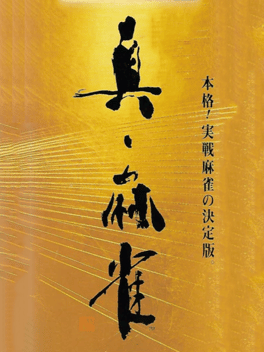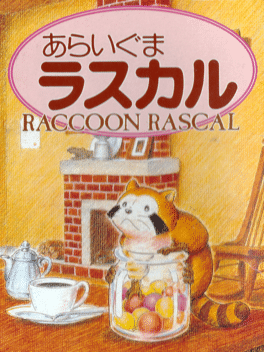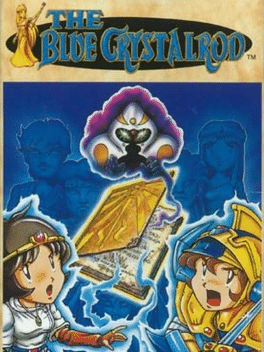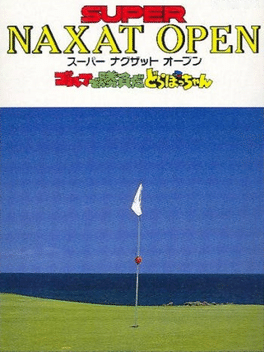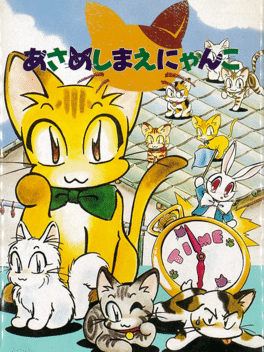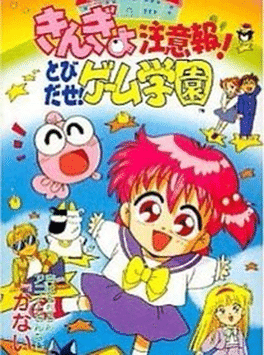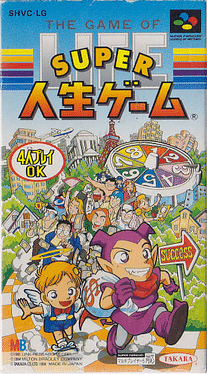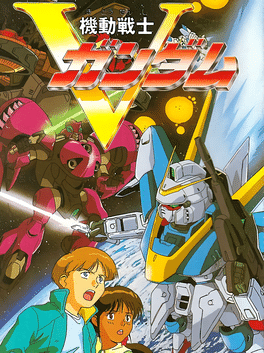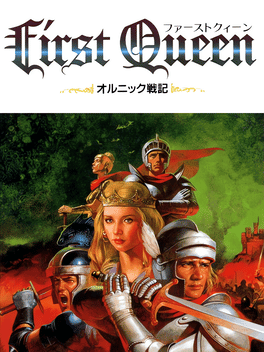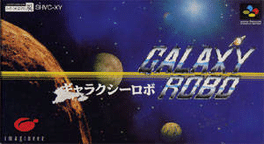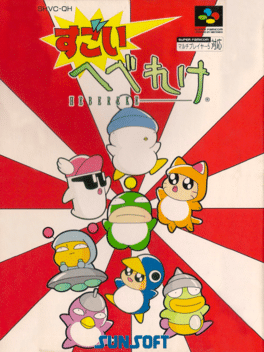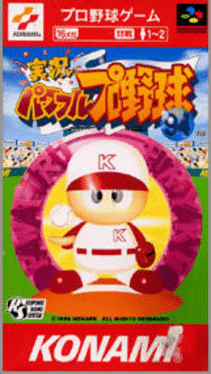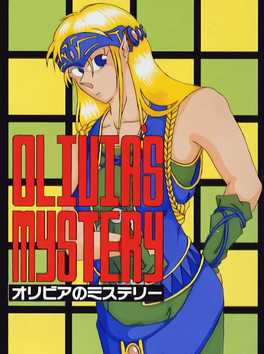Newest Super Famicom Games - Page 29
-
Shin Mahjong
1994
Shin Mahjong
1994
A Mahjong game for the Super Famicom published by Konami. It features cameos from famous historical figures. -
Nangoku Shounen Papuwa-kun
1994
Once, on an unknown southern island, a battle was waged over two mysterious stones, one red and one blue. The blue stone controls desire, and its power created the blue clan. And the red clan that inherited the power of the red stone was filled with the light of hope. Finally, the battle came to an end, and the young one who possessed the power of the blue stone fell into a deep sleep. The one with the power of the red stone flew off far across the sky. Desire and hope... until the day these two powers meet each other again... -
Raccoon Rascal
1994
Raccoon Rascal
1994
The 11 year old Robby North and his friend Oscar live in Wisconsin. During fishing they hear a shoot. A racoon-mother was shot. Robby takes the baby of this racoon with him and cares for it. The boy names the racoon Rascal. Guide Rascal through puzzles and trouble and find Robby! -
The Blue Crystal Rod
1994
The Blue Crystal Rod
1994
The Blue Crystal Rod is an Adventure game, developed by Game Studio and published by Namco, which was released in Japan in 1994. -
Kenyuu Densetsu Yaiba
1994
Kenyuu Densetsu Yaiba is a Role-Playing game, developed by Atelier Double and published by Banpresto, which was released in Japan in 1994. Based off the shōnen manga series, Legend of the Swordmaster Yaiba, by Gosho Aoyama. -
Sanrio World: Kero Kero Keroppi no Bouken Nikki
1994
Kero Kero Keroppi no Bouken Nikki is a Role-Playing game, published by Character Soft, which was released in Japan in 1994. -
Derby Jockey: Kishou he no Michi
1994
A 1994 horseracing game for the Super Famicom. It was followed with a sequel in 1995. -
Super Naxat Open: Golf de Shoubu da! Dorabocchan
1994
A Super Famicom golf game featuring characters from Naxat's Dorabocchan franchise, best known in the US as Spike McFang. -
Asameshimae Nyanko
1994
Asameshimae Nyanko
1994
Asameshimae Nyanko has similarities with Reversi (or Othello) and with fights that are similar to rock-paper-scissors to intercept additional moves with kittens that have different proficiency with vertical/horizontal and diagonal moves. In the game, players partake in a Reversi-esque game and get to choose a number of stages to play on and the type of kitten they want to use. They can also change the rules and settings to an extent. It's red versus blue, with a random player going first. As players would in Reversi or Othello, sandwich kittens vertically, horizontally or diagonally (though since the game is isometric, it's hard to say vertically or horizontally). They will change all the kittens in between to a certain color, but can additionally select cats in the area to do battle with. Winning allows players to further convert cats to their cause. There are special items which have certain effects such as making players lose a turn, but, there isn't much interruption from them. -
Kingyo Chuuihou! Tobidase! Game Gakuen
1994
Kingyo Chuuihou! Tobidase! Game Gakuen is an Action game, published by Jaleco Entertainment, which was released in Japan in 1994. -
The Game of Life: Super Jinsei Game
1994
Super Jinsei Game is a video game adaptation of Milton Bradley's The Game of Life board game. Takara, the Japanese license holders for the game, commissioned a number of video game adaptations of the Jinsei Game (as the board game is known in Japan). This particular game is the first of three Super Famicom games, and is followed by 1995's Super Jinsei Game 2 and 1996's Super Jinsei Game 3. Geo Factory worked on Super Jinsei Game, but KID would go on to develop its two sequels. Up to four players take turns moving around the board, encountering events that either increase or decrease their current status. They must travel through childhood and various schools before they encounter adult problems like university and finding work. The player who earns the most money at the end is deemed the winner. -
Kidou Senshi V-Gundam
1994
Kidou Senshi V-Gundam is an Action game, developed by TOSE and published by Bandai, which was released in Japan in 1994. -
First Queen
1994
First Queen
1994
First Queen is a real-time strategy-action RPG video game developed by Kure Software. It was first released on the Sharp X68000 and NEC PC-9801 computer platforms in Japan in 1988, and then subsequently released on the Super Famicom as First Queen: Ornic Senki in 1994. The game had three sequels. The series was also notable for featuring art work by Yoshitaka Amano, who would later gain fame for the Final Fantasy series. -
Galaxy Robo
1994
Galaxy Robo
1994
Galaxy Robo is a sci-fi strategy game from Copya System and Imagineer. The player directs a group of mech pilots, each riding distinctive bi-pedal suits and other vehicles. The game is structurally similar to Fire Emblem: the player moves all their units for their turn, either fighting enemy units or performing other tasks, and then control switches to the opponent. When two units meet in combat, a cutaway cutscene shows the aggressor landing (or missing) a hit, and the unit statistics underneath tell the player how much damage was caused. The game was a Japanese exclusive. It was one of a handful of games to use the SNES Mouse peripheral. -
Amazing Hebereke
1994
Amazing Hebereke
1994
Sugoi Hebereke (lit. "Amazing Hebereke") is a 1994 fighting game developed and published by Sunsoft exclusively in Japan for the Super Famicom on March 11, 1994. It is a spin-off of the Hebereke series, as well as Sunsoft's first attempt in the genre before they became better known for the 1995 Galaxy Fight: Universal Warriors, the 1996 Waku Waku 7, and the 1998 Astra Super Stars. Sugoi Hebereke is Bird's Eye-viewed like Vectorbeam's 1979 arcade game Warrior, but with brawling elements similar to the ones found in Atari Games' 1990 Pit-Fighter arcade, Technōs Japan's 1992 Nekketsu Kakutō Densetsu, Namco's 1994 The Outfoxies, and Nintendo's 1999 Super Smash Bros. There are two play modes in the game: story mode and VS. mode. In VS. mode, up to four players can play as the cast of the Hebereke series simultaneously when using an SNES Multitap. The object of the game is to knock out (KO) the other three opponents. Each stage is square shaped and has its own environmental hazards and moving objects. -
Zan III Spirits
1994
Zan III Spirits
1994
A strategy sim from Wolf Team based on Japan's Sengoku era and the third in their Zan Spirits series. Zan III Spirits is the third game in Wolf Team's series of warring states era-set strategy war sims. While similar to Koei's Nobunaga's Ambition series in many ways, the Zan games are far more focused on warfare and logistics. Zan III is also the second in the Zan series to be released on the Super Famicom: most of the Zan series only appeared on Japanese home computers like the PC-9801 and FM Towns. The player is once again asked to lead the armies of their chosen daimyo (warlord) in an effort to conquer the rest of 16th century Japan. Zan III Spirits is an adaptation of Zan III: Tenun Ware ni Ari for the PC-9801, which was originally released in December 1993 four months prior. Zan III Spirits, like its SFC predecessor Zan II Spirits, was modified for its console release to make it work with the limitations/strengths of the system. -
Jikkyou Pawafuru Puroyakyu '94
1994
Jikkyou Powerful Pro Yakyuu '94 is a Sports game, published by Konami, which was released in Japan in 1994. -
Olivia's Mystery
1994
Olivia's Mystery
1994
Olivia's Mystery is a Puzzle game, published by Altron, which was released in Japan in 1994. -
Zico Soccer
1994
Zico Soccer
1994
Zico Soccer is a football management video game that allows players to become the head coach of an international football team; it was named after the soccer legend Zico (also known as the White Pelé).
